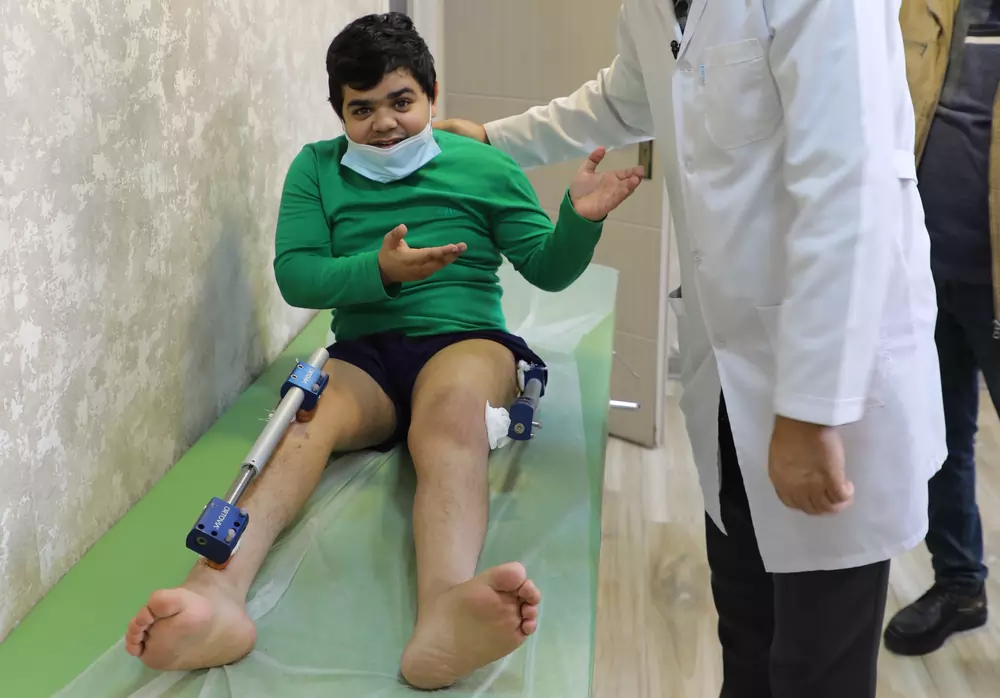How to Grow Taller After Puberty
Is it possible to grow taller after puberty? This is one of the most intriguing questions regarding height growth. The causes and treatments for short stature are very unclear. To raise your height, you can understand what methods work and what don’t if you are familiar with the natural growth process. This essay will teach you about the natural growth cycle and provide precise, long-lasting answers to short stature.

If you are short, you most likely start life with many difficulties. People frequently receive unhelpful advice about growing taller from a young age, much like obese people receive useless information about losing weight. Therefore, even if your low stature is not a problem for you, your subconscious nevertheless perceives it as such.
As you age, this problem which also has psychological effects, can persist and impact you in various ways, including your relationships and profession.
Grow Taller After Puberty
Many people like you struggle with short stature. Every child has had a height they’ve wanted to reach. People have looked for a solution to this issue throughout history, just like they do with every other point in the global problem.
Unfortunately, there is another threat here: business people looking to profit from your situation. There are many pills, medications, and dietary supplements on the market that claim to be a surefire way to get taller. The outcome is the same regardless of which sequence you try them in: nothing.
Let’s examine the natural growth process in more detail to understand why many of the remedies for short heights that have been suggested are ineffective.
Height growth in childhood and puberty
The primary growth hormone in children and adolescents is the human growth hormone (HGH), produced by the pituitary gland. This hormone assists in controlling heart function, body fluids, bone and muscle growth, sugar and fat metabolism, and body composition.
While the typical height gain throughout childhood is 6 cm each year, the height gain during adolescence can reach up to 8 cm.
Girls undergo a dramatic growth spurt six to twelve months before the start of the menstrual cycle. Then, however, the rate of growth decreases.
However, boys experience a fast growth spurt two years after girls do, with pre-spermarche (semenarche) growth rates peaking at roughly 9 cm each year. However, boys mature more slowly than girls do.
Height increases in both sexes until the growth plates sever near the end of puberty. For both boys and girls, the growth plates typically close between the ages of 15 to 18. However, for some people, this period rarely lasts until they are 19 to 20.
Even though genetics play the most significant role in height increase, adolescent growth can also be aided by a good diet, restful sleep patterns, and various physical activities. Please look at these behaviors now if you wish to grow taller while you are still a teenager.
Specific behavior can harm the body’s normal growth process. Even if your genetic makeup is good genetic makeup is good, typical behavior can break the body’s normal growth process. These include being overweight, sleeping poorly, insufficient protein and calcium, and smoking during adolescence.
Height increase after puberty
The growth plates close when puberty is over, and the body stops making new bone tissue. Although most people stop growing after their growth plates close, some might gain a few more centimeters in height in adolescence. After the growth plates are closed, height growth should not be anticipated.
Can pills, medications, and supplements promote height increase in puberty?
The short and simple response to this query is no. Once the growth plates have closed, it is impossible to grow taller with supplements, drugs, or pills. Furthermore, there is no scientific proof that dietary supplements and pharmaceuticals increase height. Additionally, these medications’ unintentional consumption might have several adverse side effects.
Get enough sleep, exercise frequently, and consume a healthy diet to encourage height growth during puberty. The following section is for you if you are past puberty and want to know how to get taller after turning 18.
How to get taller as an adult?
A few decades ago, the only way to respond to this question was by repeating the same myths. But today, thanks to advancements in orthopedic technology, there is a permanent cure for adults who are short in stature.

Leg lengthening is the only method that can permanently improve height after puberty. A surgical treatment called limb lengthening entails extending the bones of the arm or leg. The objective of this treatment can be purely cosmetic or used to address differences in limb length.
Recommended: Limb lengthening surgery side effects
The lower leg (tibia) and upper leg (femur) can each be lengthened by up to 8 cm with a single limb lengthening procedure (3.2 inches). Two limb lengthening operations can result in a total growth of up to 12–15 cm.
Utilizing the body’s capacity to grow new bone tissue allows for limb lengthening. The bone that needs to be lengthened is sliced during an osteotomy operation, and it is subsequently stabilized using various external or internal fixation devices or frames.
The sliced bone is gradually separated to encourage new bone formation at the osteotomy site. The continuous development of new bone tissue is stimulated by closing the gap by 1 mm daily. As the space between the ends of the bones widens, the body keeps making new bone tissue until the correct bone length is formed.
Different techniques can be used to do limb lengthening surgery. While traditional treatments need a lengthy recovery period, modern techniques allow patients to resume normal activities 3–4 months after surgery.
How old do I have to be to have limb lengthening surgery?
The maximum age for limb-lengthening surgery varies depending on the procedure’s goals. In limb length discrepancies or bowlegs, there is no upper age limit for limb lengthening surgery. However, you must be between the ages of 18 and 40 to get cosmetic limb lengthening surgery.
More precisely, growth plate closure is a prerequisite for young patients seeking limb-lengthening surgery. Bone density and quality are a prerequisite for patients over 40.

A balanced diet, regular exercise, and proper sleep hygiene can all help you grow taller if you’re under 18 and your growth plates haven’t yet closed. However, if your growth has been irregular, you should visit a nearby hospital and seek medical guidance.
Pursuing height-increasing pills, drugs, or workout regimens is pointless if you are an adult. However, you now understand that there is a long-lasting fix for becoming taller.
Recommended: Is limb lengthening surgery worth it?
You can read other pages and articles on our website to learn more about limb-lengthening surgery or get in touch with us to schedule a free consultation with one of our medical experts.
E-mail: info@llcig.com
Is it possible to Grow Taller After Puberty?
Leg lengthening is the only method that can permanently improve height after puberty. A surgical treatment called limb lengthening entails extending the bones of the arm or leg. The objective of this treatment can be purely cosmetic, or it can be used to address differences in limb length.
What is the age limit for limb lengthening surgery?
You must be between 18 and 40 to get cosmetic limb lengthening surgery. More precisely, growth plate closure is a prerequisite for young patients seeking limb-lengthening surgery. Bone density and quality are a prerequisite for patients over 40.



